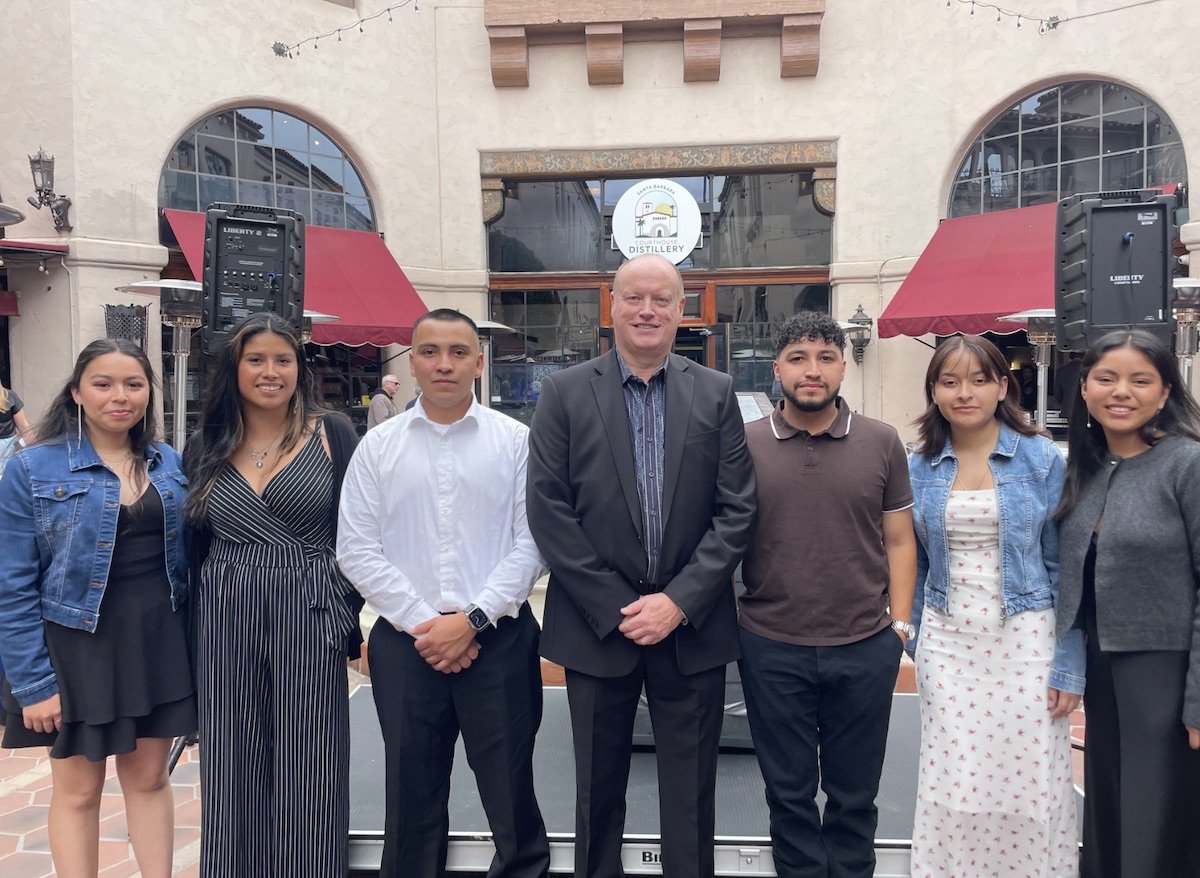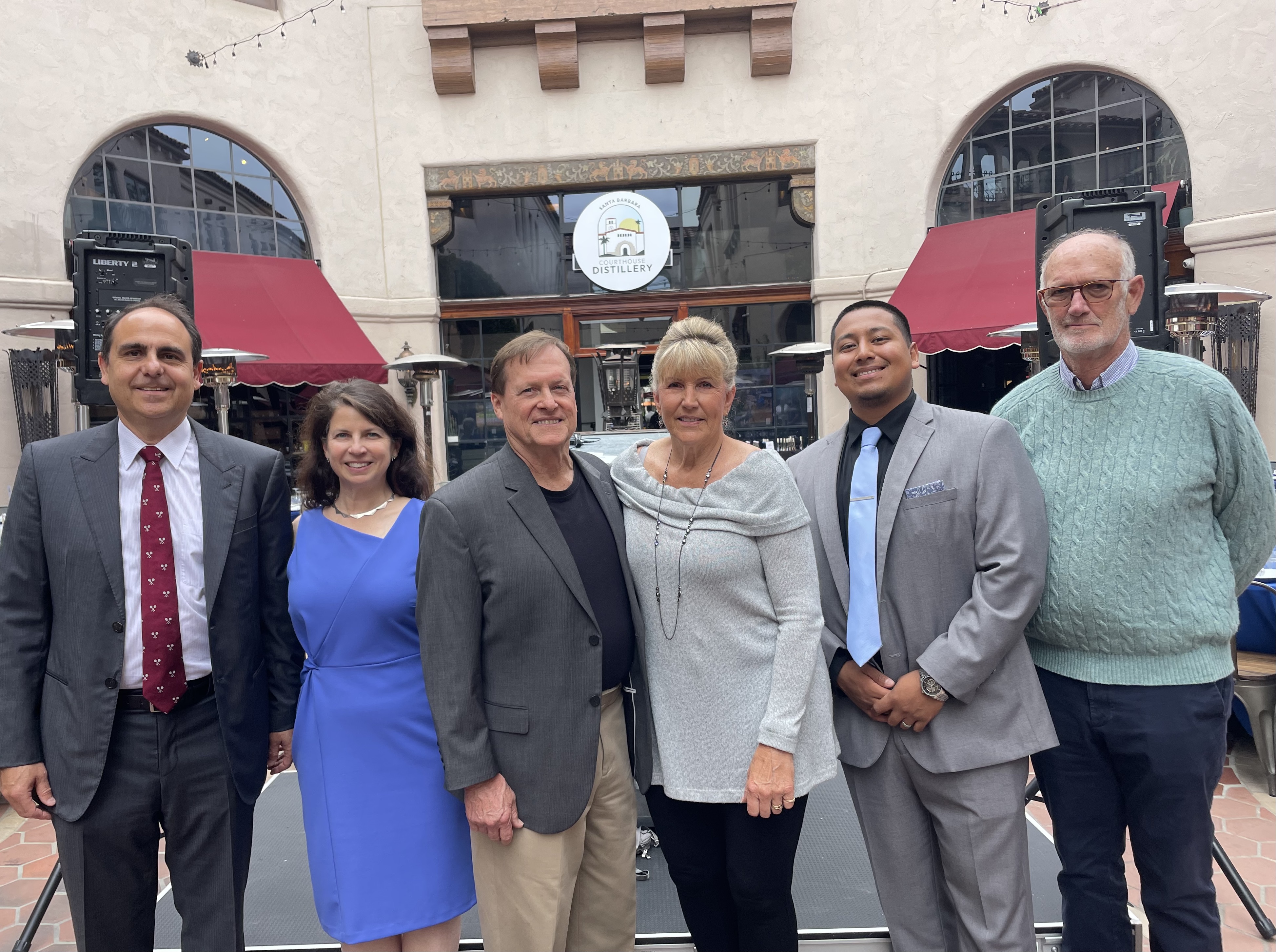School of Squash Gets Low-Income Kids into College
Mentoring, Academic, and Squash Programs Are a Successful Combination

Often mistaken for a sports program for rich kids, the Santa Barbara School of Squash (SBSOS) is, according to Executive Director Robert Graham, the “polar opposite” of that. Its four pillars, in order of priority, are mentoring, academics, squash, and community service. The nonprofit enrolls low-income kids at the middle-school level and continues its assistance to age 25.
Founded by Graham and others in 2006 as an all-volunteer organization, SBSOS has gradually grown to a staff of three and expanded programming. However, it still operates on a modest annual budget — $300,000 — and a limit of 30 kids in the main program of grades 5-12. Graham is passionate about both the mission and the sport. Previously, he ranked number one in the U.S. and was the S.B. Athletic Club’s Racquet Sports Director.
Most kids who enter the SBSOS program stick with it. Since the program’s inception, every 12th-grade participant has graduated from high school, which is no small feat given the demographic. What’s even more remarkable is that all of these high school graduates go on to college, many to top universities. All of them were the first in their families to attend college. SBSOS youth have received more than $5 million in (non-loan) financial aid from private schools and colleges.
Why squash? It is more than just an intense racquet sport that entices kids, according to Graham. It also helps get these kids into good colleges. According to him, the combination of good grades, squash success, financial need, West Coast residency, and being the first generation in their family to attend college is an attractive package. “It simply isn’t enough these days to be ‘smart’ to gain entrance to a university — especially a top university. There must be other areas of excellence, and squash is near the top of that list.” More than 150 colleges now have squash teams.
Unlike other after-school programs, SBSOS is not a drop-in program; attendance is required. SBSOS monitors grades, behavior, and fitness and meets with parents and teachers.
In addition to the 30 students in grades 5-12 it serves, SBSOS currently has another 23 students in college and five college graduates in the workforce. It continues serving these individuals as an advisor on matters they face, including on careers. SBSOS’s staff and boards use their extensive contacts to assist program participants connect with people in their fields of interest for advice and internships, as well as part- and full-time employment.
In 2022, SBSOS lost its squash home at the Santa Barbara Athletic Club, where it had played since inception. It initially pivoted to other sports and then in November 2023, the Santa Barbara Family YMCA converted a racquetball court to a squash court. Now, SBSOS uses that alongside the YMCA’s racquetball courts for its four weekday sessions. The racquetball courts are not ideal, according to Graham, but placing tape on the walls and floors enables the kids to practice some skills and everyone rotates to the one squash court. Despite the venue challenges, each year the kids have continued to play in multiple tournaments and in the SoCal Junior Squash League.
Every weekday, SBSOS holds one to 1.5 hours of academic programming, four of those at the YMCA after practice. Staff and volunteers oversee homework and tutor where needed. For students deemed capable, SBSOS encourages and assists with application to private schools. In the fall, 10 SBSOS students will be attending Laguna Blanca School, and one will go to Crane Country Day School. All SBSOS students who have attended these schools have received near-full scholarships.
The community service component of SBSOS is important, according to Graham, so that students learn to give back to their community. Through SBSOS, students volunteer with various nonprofits.
SBSOS programming continues year-round, with about two months in the summer filled with academic and athletic programming, field trips, and outings.
While SBSOS is focused on students, it is also a valuable resource for students’ families, providing information and advice on a host of issues low-income families confront.
With 30 kids in the program, SBSOS needs more than one squash court. In the short term, the hope is for the YMCA to convert a couple of more racquetball courts. SBSOS is also working with the city to place squash courts in a park, but, Graham related, the process is very long. The much bigger hope is a bold plan to build a community education and enrichment center to serve not only program participants, but the community at large.
SBSOS has quietly launched an $8 million capital campaign to do just that, and has already secured a $1 million matching donation and $600,000 in pledges. With four to six courts, the facility would enable SBSOS to expand to 240 students for its full programming and offer other kids a “low-dosage” version. Community members would join, with membership offered on a sliding-scale basis, bringing different segments of the community together and providing an income stream.
SBSOS is part of the Squash & Education Alliance, which sets program guidelines, provides some resources, and hosts camps, tournaments, and excursions. For more info, go to https://www.sbsos.org.


You must be logged in to post a comment.